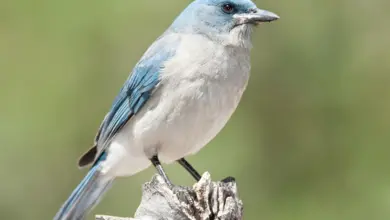Muscovy Duck Nesting Habits: Where Do Muscovies Nest?
Muscovy Duck Nesting Habits
Did you know that muscovy ducks are the only ones of their kind who roost in trees, not on the ground? Learn all about their extraordinary nesting habits in the article below.
The Muscovy duck is a large-bodied, tropical bird native to Central and South America.
Due to their large size, it would be fair to assume they nest, rather clumsily, on the ground, in or around water.
After all, they are a species of “water” fowl. This, however, is far from reality.
Instead, wild Muscovy ducks nest in tree cavities. These are often holes carved out by other bird species high in the canopy.
But what about the nesting habits of domesticated Muscovy ducks? Read on to find out.
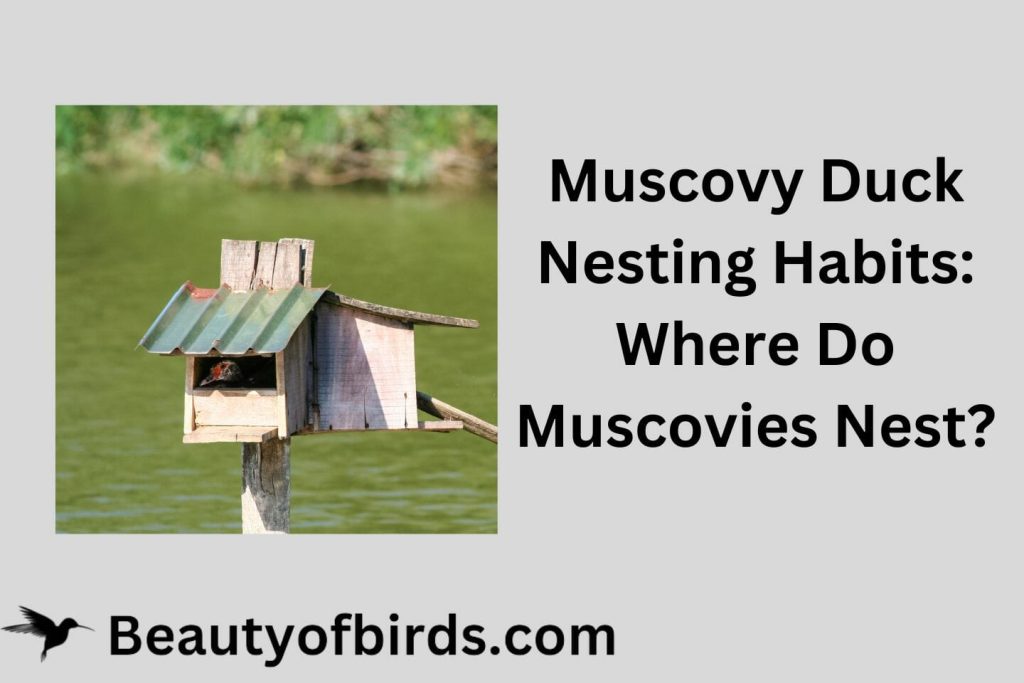
Nesting Behaviors of Wild Muscovy Ducks
The forests of Central and South America are dangerous places.
The waterways are rife with caimans, snakes, predatory fish, and large birds.
Mammalian predators, such as cats, foxes, and raccoons, prowl the forest floor.
To be a species of waterfowl here is a risky game, especially for a broody female wanting to raise a clutch of eggs.
Muscovy ducks, however, are clever. They have found an ingenious way to reduce the risk of predation.
And where better to avoid the dangers lurking below? The forest canopy!
Wild Muscovy ducks find hollow cavities within trees in which they can lay a clutch of eggs, away from predators and sheltered from extreme weather conditions, such as flash floods.
However, they don’t always nest within the tree.
Many female Muscovy ducks will simply use branch de-attachment sites (areas where branches have broken away from the main tree, leaving woody irregularities) to support the eggs.
Nests can be found as high up as 60 feet off the forest floor.
Although they can fly, Muscovy ducks are not known for being the most adept flyers. In response, most Muscovies nest at heights of around 10 – 40 feet.
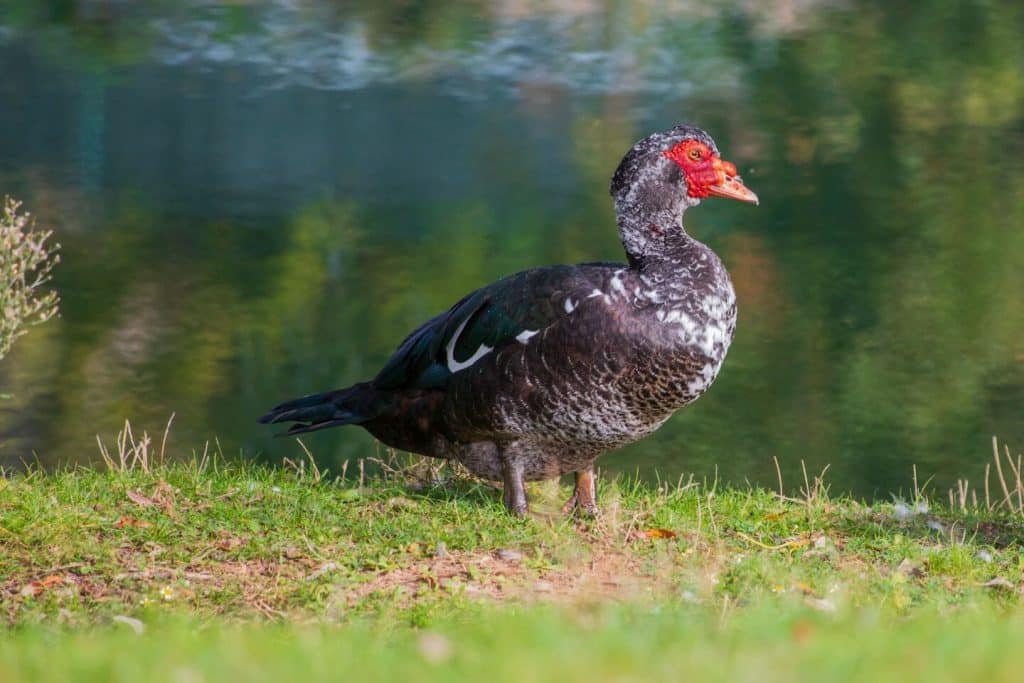
Nests within cavities often consist of small twigs, grasses, and downy feathers for extra warmth.
Despite nesting within the forest canopy, a Muscovy duck will always remain close to a water source.
Water sources, such as lakes and rivers, provide a valuable foraging area for mothers to teach their young how to forage and hunt.
Muscovies have a preference for freshwater sources.
However, you may find wild Muscovies nesting in areas of brackish water. Here, their diet will have a higher percentage of crustacean prey.
But how on Earth does a duck with webbed feet support itself on the precarious branches?
The answer is quite simple. Muscovies have a single, sharp claw on their hindfoot.
This claw can help the birds perch, placing it, rather aptly, in the perching bird category.
This sharp appendage has enabled Muscovy ducks to exploit a niche other species of waterfowl cannot, potentially aiding in nesting success as fewer predators can reach the nest.
Nesting Behaviors of Domesticated Muscovy Ducks
Domestic Muscovy ducks are different from their wild ancestors; there’s no doubt about it.
Their color and size are two of the biggest differences.
However, the nesting behaviors of wild and muscovy ducks are also slightly different.

For starters, domesticated Muscovies do not need a tree cavity to nest in.
However, this isn’t to say Muscovies don’t need anything.
In fact, in order for your Muscovy ducks to nest successfully, you need to ensure there is a safe and secure space for them to nest.
These areas are often called nest boxes.
What Are Nest Boxes?
Despite the name nest “box,” nest boxes do not need to be physical boxes.
They can be old (or new), but clean trash cans, animal crates, and buckets, to name a few.
However, the purpose is to provide an adequately spaced area filled with nesting substrate (either hay or sawdust) for your female Muscovies to feel relaxed and comfortable.
Nest boxes should be enclosed spaces with at least three sides and a roof to provide safety and security.
Essentially, nest boxes act as a tree cavity mimic.
Similar to wild muscovies, you should try to raise the nest boxes off the ground, even if it is just a couple of feet.
This is to prevent any accidental egg breakage by wandering adults.
Besides, being slightly higher gives your Muscovies that extra sense of security and protection.
You should aim to have at least one nest box per duck.
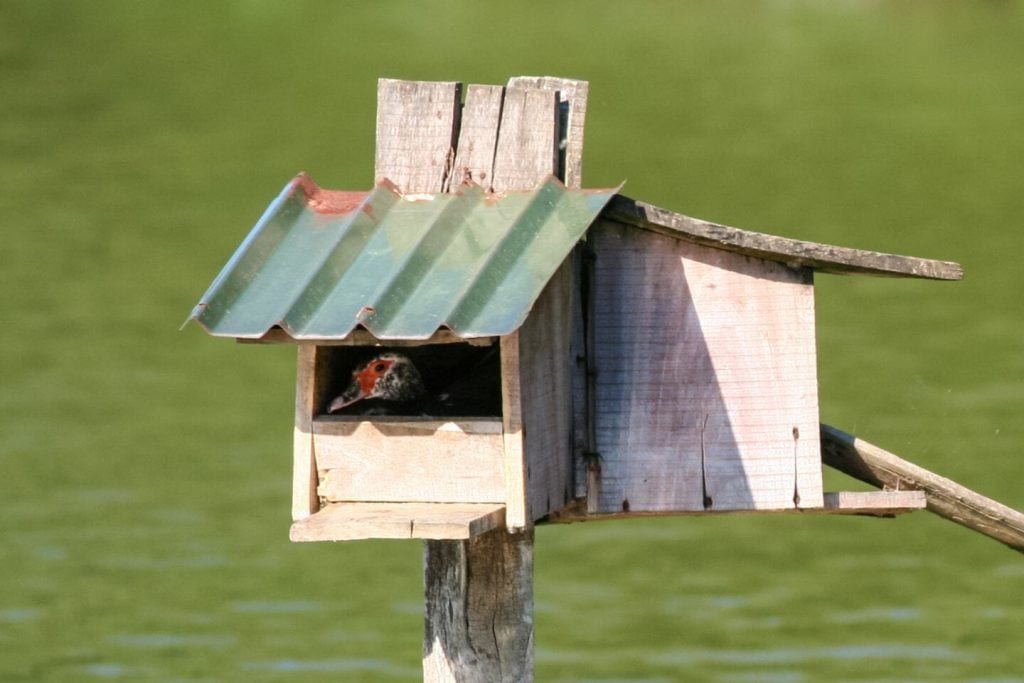
How To Make a Muscovy Duck Nest?
While nest boxes can be made from a variety of different substrates, many people opt for the classic wooden box.
What’s more, you can easily create your own DIY nest boxes from the comfort of your own home.
All you need is some wood, screws, and a saw.
In total, including a base and roof, you will need six pieces of wood cut to size.
Firstly, you’ll need to measure the pieces of wood to the desired dimensions.
For a Muscovy duck, which is a medium-large-bodied bird, aim for at least a height of 2 feet (24 inches) and a width and depth of at least 1.5 feet (18 inches).
You will need to cut out an entrance hole on the frontal piece of wood. This should be no less than 8 inches across.
However, you can gauge the size of the entrance hole by simply looking at the size of your Muscovy.
The easiest way to mark the entrance hole is to draw an outline with a pencil first. After, cut around the outline using a handheld saw or jigsaw.
Attach the separate pieces of wood together using nails and a drill (or screwdriver).
You may find it easier to construct if you clearly label each piece of wood – base, roof, front, back, side 1, and side 2.
If you’re feeling that extra bit technical, you can create a hinged roof. This increases accessibility into the nest, allowing you to hygienically clean old nest substrate.
This brings us to our next point…
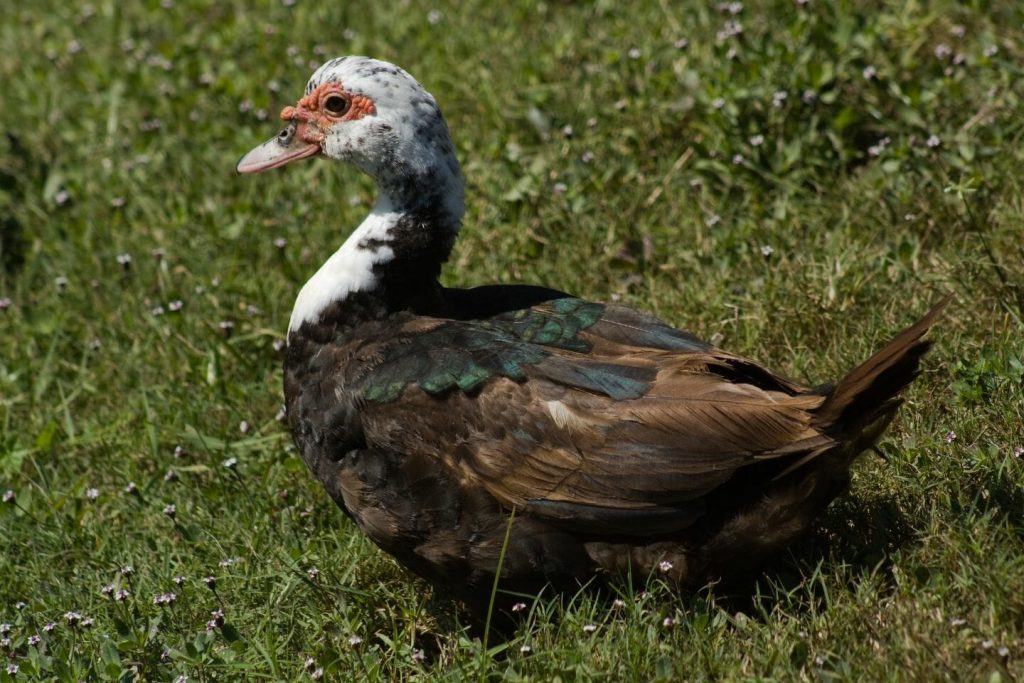
What Material Do Muscovy Ducks Like to Nest With?
Many pet stores stock a variety of different nesting materials, which can be used within nest boxes.
However, the choice can be somewhat overwhelming. So, what is the best material to use?
Pine needles and leaves are free and readily available.
However, there are certain health complications that may affect your Muscovies.
If damp, leaves and pine needles promote the growth of a potentially fatal fungus, Aspergillus fumigatus.
Straw is a common accessory for many pet bedding. It offers cheap and effective insulation.
However, similar to leaves and pine needles, damp straw is a breeding ground for Aspergillus fumigatus.
Left untreated, this fungus can cause a strain of pneumonia-like symptoms and possible death.
So, what about sawdust?
Sawdust is the recommended substrate for Muscovy duck bedding. However, there are multiple types of sawdust that can be sold at pet stores.
Ensure you buy pine sawdust. Not only is pine sawdust cheap, but it also has antimicrobial and antifungal properties.
And above all, it is an effective insulator to keep your Muscovies warm whilst nesting.
Frequently Asked Questions
What does a Muscovy duck nest look like?
Domesticated Muscovies rely heavily on the bedding you provide in their nest boxes. They will also add feathers of their own to provide extra insulation.
How long do Muscovies sit on eggs?
During this time, they will only leave their nest to feed, drink and defecate.
Where does Muscovy duck sleep at night?
If possible, you should encourage your Muscovies to sleep in an enclosed space, such as a run or coop, as a prevention measure against predators.
What time of year do Muscovy ducks have babies?
Seasons last from August to May, especially during times of warmer weather, where insect prey is most abundant.
Can Muscovy ducks have two nests?
However, it is very unlikely for a female Muscovy to have two nests at the same time.
Wrap Up
In the wild, Muscovy ducks can be found nesting in cavities within the tree canopy. Nests can be found up to 60 feet high.
Domestic Muscovy ducks do not need a cavity within a tree. They are happy to nest within designated nest boxes.
Nest boxes should be enclosed and secure space, slightly raised off the ground.
The bedding within the nest box should be sawdust or hay. However, sawdust may prevent the spread of diseases more effectively than hay.
Thank you for reading.





